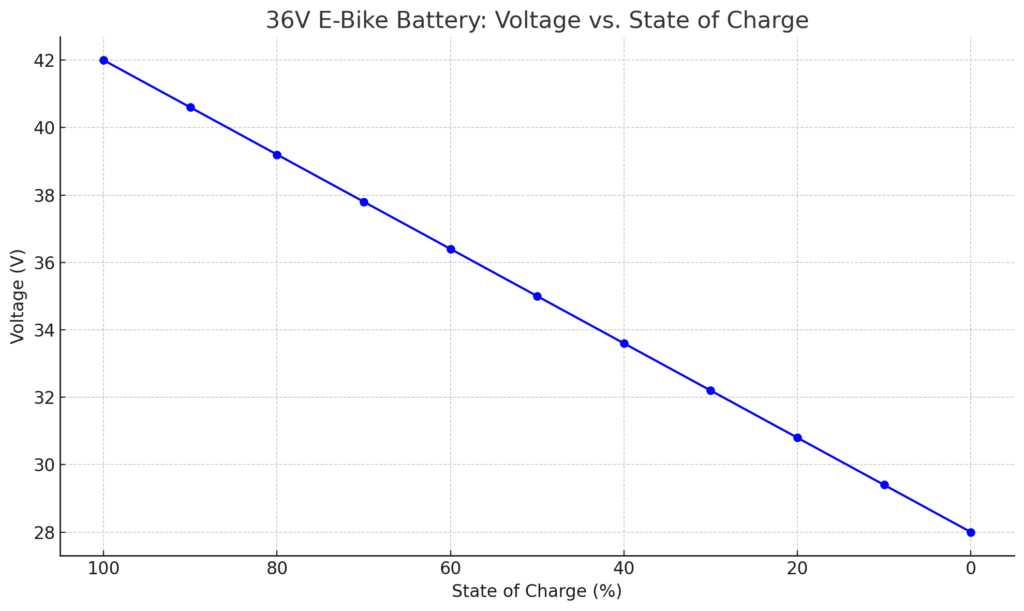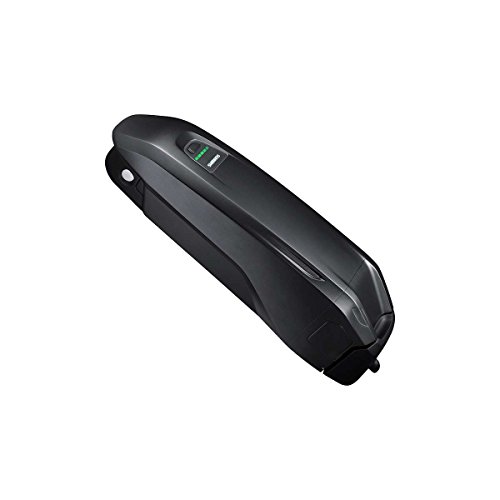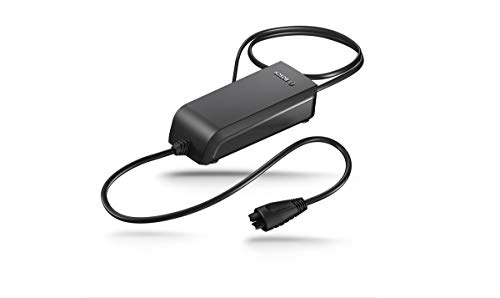Disclosure
This website is a participant in the Amazon Services LLC Associates Program, an affiliate advertising program designed to provide a means for us to earn fees by linking to Amazon.com and affiliated sites.
Did you know a 36V e-bike battery doesn’t actually deliver 36 volts consistently? Voltage fluctuates based on charge level, load, and temperature, directly impacting your ride’s power and range.
Many riders assume “36V” means fixed performance, but reality is far more nuanced. Understanding your battery’s voltage chart unlocks longer battery life, smarter charging habits, and peak performance when you need it most.
In this guide, you’ll master voltage thresholds, decode state-of-charge percentages, and learn real-world examples—like why your e-bike slows down at 30V. By the end, you’ll ride confidently, knowing exactly when to recharge and how to maximize every volt.
Best 36V E-Bike Batteries for Optimal Performance
Shimano BT-E8010 36V 504Wh Battery
Engineered for reliability, the Shimano BT-E8010 delivers consistent power with its high-quality Panasonic cells. Its 504Wh capacity ensures long-range rides, while the integrated battery management system (BMS) prevents overcharging and overheating. Ideal for commuters and mountain bikers needing dependable voltage stability.
- Downtube Mount
- Low Profile Design
- Waterproof
Bosch eBike Compact Charger 500 36V Battery
The Bosch PowerTube 500 offers seamless integration with frame-mounted e-bikes, providing a sleek, hidden design. With 500Wh capacity and advanced temperature management, it excels in varied conditions. Its durable casing and smart connectivity via the Bosch eBike Flow app make it a top-tier choice.
- Designed for ebike: Yes
- Bosch Compact 2A battery charger.
- Weighs less than 600 grams and is 40 percent less bulky than the Standard…
ShunTongDa Folding E-Bike Battery 36V
Featuring premium LG lithium-ion cells, the Reention Dorado battery is lightweight yet powerful, perfect for urban e-bikes. Its compact design fits most standard downtube mounts, and the built-in BMS ensures safe charging cycles. A budget-friendly option without compromising performance.
- PRODUCT SPECIFICATIONS: 36v10.5ah with 30A BMS and charger Apply for:…
- Charge Cut-off Voltage : 42V(36V) Discharge Cut-off Voltage : 30V (36V)…
- 【 The charging cycle of lithium-ion ebike battery pack exceeds 1000…
36V E-Bike Battery Voltage Ranges and Performance
36V E-Bike Battery Voltage vs. State of Charge
| State of Charge (%) | Voltage (V) |
|---|---|
| 100% | 42.0 |
| 90% | 40.6 |
| 80% | 39.2 |
| 70% | 37.8 |
| 60% | 36.4 |
| 50% | 35.0 |
| 40% | 33.6 |
| 30% | 32.2 |
| 20% | 30.8 |
| 10% | 29.4 |
| 0% (empty) | 28.0 or lower |

How Voltage Fluctuates During Use
A 36V e-bike battery doesn’t maintain a constant voltage—it varies significantly based on charge level and usage. When fully charged, a lithium-ion battery actually reads around 42V, gradually dropping as energy depletes. The nominal 36V rating represents the average voltage during discharge, not the peak or minimum. For example:
- 100% charge: 42V (resting voltage)
- 50% charge: 37-38V (optimal performance range)
- 20% charge: 33-34V (power reduction likely)
- 0% charge: 30V (cutoff voltage to prevent damage)
This fluctuation occurs because lithium-ion cells operate on a discharge curve—steep at the extremes and flatter in the middle. When climbing a hill, voltage may temporarily sag 2-3V under load, explaining why your e-bike feels sluggish when the battery is low.
Why Voltage Matters for Speed and Torque
Your motor’s power output directly correlates with voltage. A 10% voltage drop (from 36V to 32.4V) can reduce speed by 5-8 mph and torque by 15-20%. Real-world example: A Bosch Performance Line motor delivers 63Nm torque at 36V but only ~50Nm at 32V. This is why:
- Acceleration suffers first: Lower voltage reduces current flow to the motor
- Controllers intervene: Many systems throttle power below 33V to protect the battery
- Efficiency drops: More energy converts to heat instead of motion
Critical Voltage Thresholds to Monitor
Knowing these voltage landmarks prevents battery damage and optimizes rides:
- 42V: Stop charging immediately—exceeding this risks overheating
- 38V: Ideal recharge point for maximum battery lifespan
- 30V: Absolute minimum—discharging below this causes permanent capacity loss
Pro tip: Use a voltage alarm (like the Cycle Satiator) to alert you at 32V. This gives a 10-15 minute buffer to reach a charger before hitting critical levels.
Temperature’s Impact on Voltage Readings
Cold weather can temporarily depress voltage readings by 10-15%. A battery showing 35V at 68°F might read just 32V at 32°F—even with the same charge level. This explains winter performance drops. Always check voltage after the battery warms through mild use for accurate assessments.
How to Accurately Measure and Interpret Your 36V Battery’s Voltage
Proper Voltage Measurement Techniques
Getting accurate voltage readings requires understanding the difference between resting voltage and loaded voltage. When you check voltage immediately after riding, you’ll get a depressed “loaded” reading that doesn’t reflect true capacity. For reliable measurements:
- Let the battery rest: Wait at least 30 minutes after use for voltage to stabilize
- Use a quality multimeter: Set to DC voltage with at least 0.1V precision (like the Fluke 101)
- Check at the terminals: Measure between positive and negative contacts, not through USB ports
Example: A battery showing 34.2V under load might rebound to 36.8V after resting – this difference is crucial for assessing actual charge state.
Decoding Voltage to State-of-Charge Percentage
Unlike gas tanks, e-bike batteries don’t discharge linearly. Use this detailed conversion chart:
| Voltage (Resting) | Charge State | Practical Implications |
|---|---|---|
| 42.0V | 100% | Maximum capacity – ideal for long rides |
| 39.6V | 80% | Best for battery longevity |
| 36.0V | 50% | Time to plan recharge |
| 33.0V | 20% | Performance drops noticeable |
Troubleshooting Voltage Irregularities
Common voltage-related issues and solutions:
- Sudden voltage drops: Often indicates a failing cell – test individual cell voltages if possible
- Inconsistent readings: Clean battery contacts with isopropyl alcohol to ensure proper connection
- Voltage “rebound”: If voltage jumps up significantly after resting, your battery may be aging
Professional tip: Record voltage measurements after every 10 charge cycles to track battery health trends. A healthy 36V battery should maintain within 0.5V of its original readings at each charge state.
Smart Charging Practices Based on Voltage
Optimal charging depends on current voltage levels:
- Above 38V: Use maintenance charge (trickle) mode
- 36-38V: Standard charge is safe
- Below 33V: Use recovery mode if available to prevent cell damage
Example: For weekday commutes, charge to 39.6V (80%) for battery longevity, then fully charge to 42V only before weekend adventures.
Advanced Battery Management: Maximizing Performance and Longevity
Cell Balancing and Voltage Consistency
Every 36V battery pack contains multiple cells (typically 10 in series for 36V nominal), and maintaining voltage balance between them is critical. When cells become unbalanced (varying by more than 0.05V), you’ll notice:
- Reduced overall capacity (10-30% less range)
- Premature low-voltage cutoff during rides
- Potential battery management system (BMS) shutdowns
Professional maintenance procedure:
- Use a cell-level voltage checker (like the ISDT BattGo BG-8S)
- Measure each cell group after full charge
- If variance exceeds 0.03V, perform a balance charge
- For persistent imbalances, consider professional servicing
Voltage Sag Analysis and Battery Health
Voltage sag under load reveals your battery’s true condition. Compare these scenarios:
| Battery Condition | Resting Voltage | Under 500W Load | Sag Percentage |
|---|---|---|---|
| New | 40.5V | 38.2V | 5.7% |
| 1 Year Old | 40.3V | 37.0V | 8.2% |
| Failing | 39.8V | 34.5V | 13.3% |
Actionable insight: If your sag exceeds 10% with moderate loads, start planning for battery replacement.
Temperature Compensation and Voltage Adjustments
Lithium-ion batteries require voltage adjustments in extreme temperatures:
- Below 50°F (10°C): Add 0.3V to all cutoff thresholds
- Above 95°F (35°C): Subtract 0.2V from charging limits
Example: In winter, your 30V cutoff becomes 30.3V to prevent false low-voltage triggers. Conversely, summer charging should stop at 41.8V instead of 42V.
Common Voltage-Related Mistakes to Avoid
Advanced users still make these errors:
- Charging to 42V after every ride – This accelerates degradation; 80-90% charges are better for daily use
- Ignoring voltage rebound – A battery showing 32V that rebounds to 36V indicates serious cell wear
- Using mismatched chargers – Even “36V” chargers vary in maximum voltage output (41-42.5V range)
Pro tip: Keep a voltage logbook tracking resting voltage, loaded voltage, ambient temperature, and range achieved. This data becomes invaluable for predicting battery replacement timing.
Optimizing Battery Performance Through Voltage Management Strategies
Custom Voltage Profiles for Different Riding Styles
Serious riders should develop voltage-based riding strategies tailored to their needs. Consider these scenarios:
| Riding Style | Ideal Voltage Range | Recommended Actions |
|---|---|---|
| Hill Climbing | 38-42V | Start with full charge, monitor voltage drops >2V per minute |
| Long-Distance | 36-39V | Maintain moderate assist levels to stay in efficient voltage band |
| Urban Commuting | 33-38V | Utilize regenerative braking when voltage drops below 35V |
Advanced technique: Program your display (if compatible) to show voltage instead of percentage for real-time performance monitoring.
Voltage-Based Maintenance Schedule
Implement this professional maintenance routine based on voltage readings:
- Weekly: Check resting voltage after full charge (should be 41.5-42V)
- Monthly: Test voltage under 300W load (shouldn’t drop below 36V)
- Quarterly: Perform deep discharge to 30V followed by full recharge to recalibrate BMS
- Annually: Measure individual cell group voltages (max 0.03V variance)
Safety Protocols for Voltage Extremes
When dealing with abnormal voltage situations:
- Over-voltage (above 42.5V): Immediately disconnect charger – indicates faulty BMS or charger
- Under-voltage (below 30V): Use specialized charger with recovery mode – standard chargers may refuse to charge
- Rapid voltage fluctuations: Check all connections for corrosion or looseness
Critical reminder: Never attempt to manually balance cells or modify battery packs without professional training – lithium batteries can pose serious fire risks if mishandled.
Advanced Voltage Monitoring Systems
For tech-savvy riders, these systems provide superior voltage tracking:
- Bluetooth BMS interfaces (like the Luna Charger Advanced) – view real-time cell voltages via smartphone
- Data-logging wattmeters – record voltage fluctuations throughout rides for analysis
- Programmable controllers – set custom low-voltage cutoffs based on riding conditions
Example: Using a data logger revealed that voltage sag during acceleration was causing premature low-power mode – adjusting pedal assist startup parameters solved the issue.
Long-Term Battery Health: Voltage Management for Maximum Lifespan
Cycle Life vs. Voltage Parameters
Your charging habits dramatically affect battery longevity. Lithium-ion cells follow these lifespan patterns based on voltage management:
| Charging Strategy | Max Voltage | Estimated Cycles | Capacity Retention After 3 Years |
|---|---|---|---|
| Conservative | 40.5V (90%) | 1,200-1,500 | 85-90% |
| Standard | 42V (100%) | 800-1,000 | 75-80% |
| Aggressive | 42.5V+ | 300-500 | 60-65% |
Practical application: For daily commuting, charging to 90% extends pack life by 40% compared to full charges, while still providing 85% of the range.
Voltage-Based Storage Protocols
Proper storage voltage significantly impacts long-term health:
- Short-term (1-3 months): Store at 38-39V (60% charge)
- Medium-term (3-6 months): Store at 36-37V (40% charge)
- Long-term (6+ months): Store at 34-35V (25% charge) with monthly voltage checks
Critical detail: Every 0.1V above 3.7V/cell during storage accelerates capacity loss by approximately 1% per month.
Voltage Recovery Techniques for Aged Batteries
When dealing with voltage depression in older batteries:
- Reconditioning cycles: 3-5 partial discharges to 33V followed by slow charges can recover 5-8% capacity
- Balancing charges: 48-hour balance mode sessions help equalize cell voltages
- Temperature therapy: Storing at 104°F (40°C) at 35V for 8 hours can temporarily improve performance
Environmental and Safety Considerations
Voltage management impacts more than just performance:
- Fire risk: Batteries kept above 40V for extended periods have 3x higher thermal runaway risk
- Recycling efficiency: Properly maintained batteries (voltage 30-36V at end-of-life) are easier and safer to recycle
- Carbon footprint: Extending battery life from 500 to 1,000 cycles reduces lifecycle emissions by 38%
Emerging trend: Smart BMS systems now incorporate machine learning to optimize charging voltages based on usage patterns, potentially extending lifespans by another 20-30%.
Advanced Voltage Monitoring and System Integration Techniques
Real-Time Voltage Monitoring Systems
Modern e-bikes offer multiple methods for precise voltage tracking, each with distinct advantages:
| Monitoring Method | Accuracy | Update Frequency | Best Use Case |
|---|---|---|---|
| Built-in Display | ±0.5V | 1-2 sec | General riding awareness |
| Bluetooth BMS | ±0.05V | 0.5 sec | Performance tuning |
| External Data Logger | ±0.01V | 0.1 sec | Diagnostic analysis |
Pro tip: Combine a Bluetooth BMS with ride-tracking apps like RideWithGPS to correlate voltage drops with specific terrain features.
Voltage Integration with Motor Controllers
Advanced controllers use voltage data to optimize performance:
- Dynamic power adjustment: Reduces amp draw when voltage sags below 35V to prevent shutdown
- Regenerative braking tuning: Increases recovery current when voltage drops below 36V
- Temperature compensation: Adjusts voltage thresholds based on battery pack temperature readings
Example: The Grin Technologies Phaserunner controller can be programmed to gradually reduce power starting at 34V rather than cutting out abruptly at 30V.
Diagnosing Voltage-Related Issues
Comprehensive troubleshooting guide for common voltage symptoms:
- Symptom: Rapid voltage drops during acceleration
- Check for corroded battery contacts (clean with contact cleaner)
- Test individual cell group voltages (imbalance >0.1V indicates problems)
- Symptom: Voltage reading fluctuates wildly
- Inspect wiring harness for loose connections
- Test voltage at battery terminals (bypassing display connection)
- Symptom: Full charge voltage declining over time
- Perform capacity test (new 36V 10Ah battery should deliver 360Wh)
- Check charger output voltage with multimeter
Voltage Optimization for Custom Builds
When creating custom e-bike configurations:
- Match controller LVC (Low Voltage Cutoff) to battery specifications (±0.5V tolerance)
- Ensure all system components (display, controller, BMS) use the same voltage reference
- For parallel battery setups, verify voltage difference <0.3V before connection
Advanced technique: Use a programmable DC-DC converter to maintain stable voltage to accessories regardless of battery state.
Mastering Voltage Management: Professional-Grade Optimization Strategies
System-Wide Voltage Synchronization
Premium e-bike systems integrate voltage monitoring across all components for peak performance:
| Component | Optimal Voltage Range | Calibration Procedure |
|---|---|---|
| Battery BMS | 30-42V ±0.5% | Annual full discharge/charge cycle with calibration tool |
| Motor Controller | 30-42V ±1% | Verify LVC alignment using programmable interface |
| Display Unit | 30-42V ±2% | Cross-check with multimeter at various charge states |
Critical insight: A 1V discrepancy between components can cause 15% performance variation and premature low-battery warnings.
Advanced Performance Optimization
World-class riders use these voltage management techniques:
- Pre-ride voltage tuning: Warm battery to 68-86°F (20-30°C) for optimal voltage stability
- Dynamic voltage mapping: Create route-specific voltage profiles for known courses
- Load-balancing: Distribute amp draw between multiple batteries based on real-time voltage readings
Pro technique: Elite racers maintain 38-40V during competition by managing assist levels to avoid voltage sag below critical thresholds.
Comprehensive Risk Management Framework
Mitigate voltage-related risks through this systematic approach:
- Pre-ride checklist:
- Verify full-charge voltage within 41.5-42.2V range
- Check cell balance variance <0.03V
- Ride monitoring:
- Set voltage alarms at 35V (warning) and 32V (critical)
- Track voltage drop rate per mile
- Post-ride analysis:
- Document voltage rebound time
- Compare actual vs. expected voltage depletion
Quality Assurance Protocols
Implement these professional validation procedures:
- Voltage stress testing: Cycle between 30V-42V 50 times to verify stability
- Load response validation:
- Test voltage drop at 250W, 500W, and 750W loads
- Acceptable sag: <8% at max continuous power
- Environmental testing: Verify voltage stability across -4°F to 122°F (-20°C to 50°C) range
Industry benchmark: Premium batteries maintain voltage within 5% of specification after 500 full cycles when properly maintained.
Conclusion: Mastering Your 36V E-Bike Battery’s Potential
Understanding your 36V e-bike battery’s voltage behavior unlocks superior performance and longevity. As we’ve explored, voltage isn’t static—it fluctuates from 42V when fully charged down to 30V at cutoff, with each range offering distinct riding characteristics.
By monitoring resting versus loaded voltage, implementing proper charging strategies, and maintaining cell balance, you can significantly extend battery life while optimizing power delivery.
Remember these key takeaways:
- Voltage directly determines your motor’s power output and efficiency
- Temperature, age, and charging habits all impact voltage stability
- Advanced monitoring prevents premature battery degradation
Put this knowledge into action today: Start tracking your battery’s voltage patterns, adjust your charging routine, and experience the difference proper voltage management makes. Your e-bike will reward you with more consistent performance, longer range, and years of reliable service.
Frequently Asked Questions About E-Bike 36V Batteries
What exactly does 36V mean for an e-bike battery?
The 36V rating refers to the nominal voltage – the average operating voltage during discharge. In reality, a fully charged 36V lithium-ion battery measures about 42V, gradually decreasing to around 30V when depleted.
This voltage range directly impacts your motor’s power output, with higher voltages delivering better performance. For example, a 36V battery at 40V will provide approximately 15% more torque than the same battery at 36V.
How can I accurately check my 36V battery’s voltage?
Use a digital multimeter set to DC voltage and measure at the battery terminals. For most accurate readings:
- Let the battery rest for 30 minutes after charging or riding
- Set your multimeter to 200V DC range
- Connect red probe to positive terminal, black to negative
A healthy 36V battery should show 41-42V when fully charged and 36-37V at 50% capacity.
Why does my e-bike slow down when the battery gets low?
This occurs due to voltage sag – as charge depletes, voltage drops, reducing power to the motor. Most controllers automatically limit performance below 33V to protect the battery.
For instance, a 36V system might reduce assist levels by 25% at 33V and cut power completely at 30V. This is normal protection circuitry, not necessarily a battery problem.
How often should I fully charge my 36V battery?
For optimal lifespan:
- Daily commuters: Full charge every 2-3 days (partial charges in between)
- Weekend riders: Full charge before each ride
- Long-term storage: Maintain 36-37V (about 40% charge)
Lithium batteries prefer partial discharges – frequent full 100% charges can reduce lifespan by 20-30% compared to charging to 80-90%.
What voltage indicates my 36V battery needs replacement?
Watch for these warning signs:
- Full charge voltage below 40.5V (should be 41-42V)
- Rapid voltage drops under load (>1V per minute of riding)
- Capacity reduced to 70% of original (measure watt-hours used per charge)
For example, a 360Wh battery that now only delivers 250Wh per charge likely needs replacement.
Can I use a higher voltage charger to charge my 36V battery faster?
Absolutely not. Using anything other than a proper 36V charger (typically 42V output) can:
- Overheat and damage battery cells
- Trigger safety shutdowns in the BMS
- Create fire hazards from overcharging
Fast charging requires specialized chargers that communicate with the battery’s BMS – never exceed manufacturer specifications.
Why does my battery show different voltages when riding versus at rest?
This voltage sag is completely normal and occurs because:
- Current draw creates internal resistance in the battery
- Chemical reactions slow under load
- Battery warms during use, affecting voltage
A quality 36V battery might show 38V while climbing a hill but rebound to 40V when you stop. Excessive sag (>15%) indicates aging cells.
How does temperature affect my 36V battery’s voltage?
Temperature impacts voltage significantly:
- Cold (32°F/0°C): Voltage drops 10-15% temporarily
- Hot (95°F/35°C): Voltage rises slightly but degrades faster
- Ideal (68°F/20°C): Most accurate voltage readings
Always let a cold battery warm to room temperature before charging, and avoid charging in temperatures below freezing.



